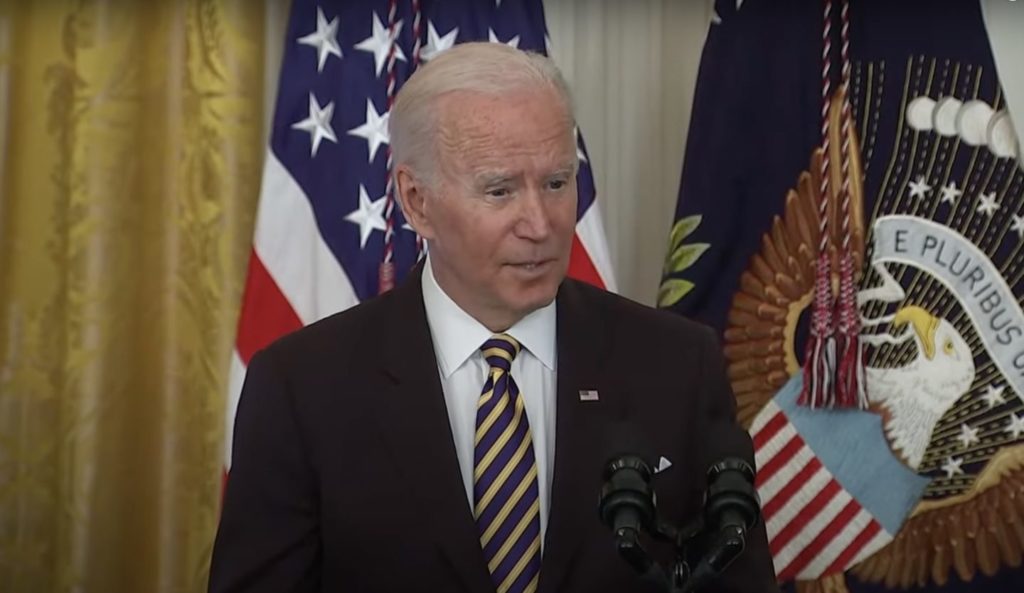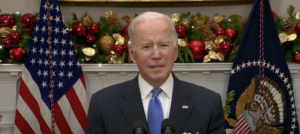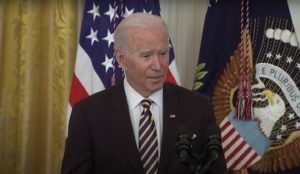In latest announcement, Biden is walking a political tightrope over student loan debt. Here’s why
If playing hard-to-get is the best strategy to woo someone, President Joe Biden is courting student loan debtors all wrong. He’s all but lying on the bed with his best come-hither look.
The…

If playing hard-to-get is the best strategy to woo someone, President Joe Biden is courting student loan debtors all wrong. He’s all but lying on the bed with his best come-hither look.
The Democratic Party has long teased a broad student loan forgiveness program, with the hints becoming quite brazen every election year. On Wednesday President Biden announced the first general loan forgiveness in U.S. history.
The plan promises to wipe out $10,000 dollars of student loan debt for all individuals who earn less than $125,000 per year . Forgiveness jumps to $20,000 if the borrower received Pell Grants. The current pause on payments is also extended until the end of the year.
Previously, major loan forgiveness has been granted to victims of fraud (ITT Tech, DeVry, etc.) or those who meet other special criteria, such as permanently disability. Each of these programs have been expanded or had qualifications eased under the Biden administration.
Unsurprisingly, the deal for long-standing Democratic Party supporters like teachers, and employees of government and certain nonprofits is far sweeter.
Currently, teachers can see $17,500 in student loan obligations evaporate with minimal qualifying requirements. Government and nonprofit workers have an even better arrangement. Once they’ve made 120 monthly payments, the remainder of their debt is simply forgiven, resulting in an average loan dismissal of $64,000 per debtor.
In addition to that relief, administration officials have also discussed the possibility of additional forgiveness for specific subsets of the population.
It doesn’t take a student loan purchased PhD to decipher the meaning of “specific subsets of the population” in an election year. Any expansion of a general forgiveness will almost certainly be tailored to reward or punish constituencies based on political calculations.
Congressional Democrats, who have not yet encountered an expenditure they’re unwilling to inflate, have been pushing hard to raise the forgiveness limit from $10,000 to as much as $50,000. This amount has been echoed by Sen. Warren (D-MA) and Sen. Sanders (D-VT) among others.
Their cries have been largely rebuffed by the administration, which is keen to be seen as somewhat fiscally responsible in this area, having already extended the pandemic-related pause on student loan payments four times, most recently shifting the expiration date from May 1 to Aug. 31, a full two years of no interest, no payments on $1.7 trillion in outstanding loans.
This move, coming as it does within weeks of the midterm elections, appears to be yet another exercise in raw vote buying using taxpayer funds. However, there is a delicate balance to be struck if the administration hopes to avoid a stinging rebuke at the polls in November.
According to Matthew Chingos, vice president of education data and policy at the Urban Institute, less than 20% of households with incomes below the $125K threshold even have student loan debt, a number that drops to 18% of households if the income cap were to be waived.
This disparity leaves Democrats facing a deeply concerning political calculation: Can they rely on enough voter turnout among forgiveness recipients to offset the anger (and subsequent backlash turnout) among the remaining 80% left holding the bill, most of whom have never attended college?
According to a May 2022 CNN poll, it appears most of the would-be recipients of this taxpayer largesse are already voting in the Democrat camp, and the likelihood of Republicans switching parties as a thank you for a benefit already enacted is all but nil.
The circumstance is fraught with danger for Democrats. Their socialist left wing insists on broad, share-the-wealth measures, but fails to reckon the consequences to electoral viability, while the more moderate elements of the party (assuming any remain!) would rather maintain the status quo, teasing forgiveness each election cycle to keep voters on the string as long as possible.
The forgiveness of only $10,000 dollars, is described by Wisdom Cole, the national director of the NAACP’s youth and college division, as “a slap in the face.”
Given the recent surges in inflation, relief of only $10,000 will be seen by many big-city, blue state residents as pocket change when compared to their overall debt load and increasing cost of living.
While no one will likely refuse the erasure of any amount of their debt, the comparisons between the government’s assistance to them and the now-routine bailout/capital infusion given to stiffen up markets won’t be lost on student loan borrowers. Neither will the tens of billions funneled into Ukraine.
Even at the $10K figure, the fiscal impact will be roughly $277 billion, which is a grand sum indeed, but must be viewed in perspective.
Biden’s recently passed Build Back Better bill claims to spend about $2.4 trillion dollars, but that figure relies on an avalanche of arbitrary sunsets and program expirations acting as offsets.
As even the most dull-witted student loan borrower must know, the likelihood of any sunsets or expirations to government programs being permitted to stand is laughable. The bill is more reliably estimated to exceed $5 trillion dollars, an amount 18 times higher than the loan forgiveness Biden is expected to trumpet shortly.
None of this should be interpreted as a show of support for the coming tax giveaway Biden has in mind.
On the contrary, looking at it from the perspective of voters who are becoming used to witnessing the largest transfers of money in human history, one can’t help but think the move may backfire on the left as voters catch on to Democrats’ devotion to big business, big pharma, and big government, over their weak, pretentious concern for the “little people.”
Republicans might do well to point this out between now and November.
A version of this article was published originally by The Daily Caller.



